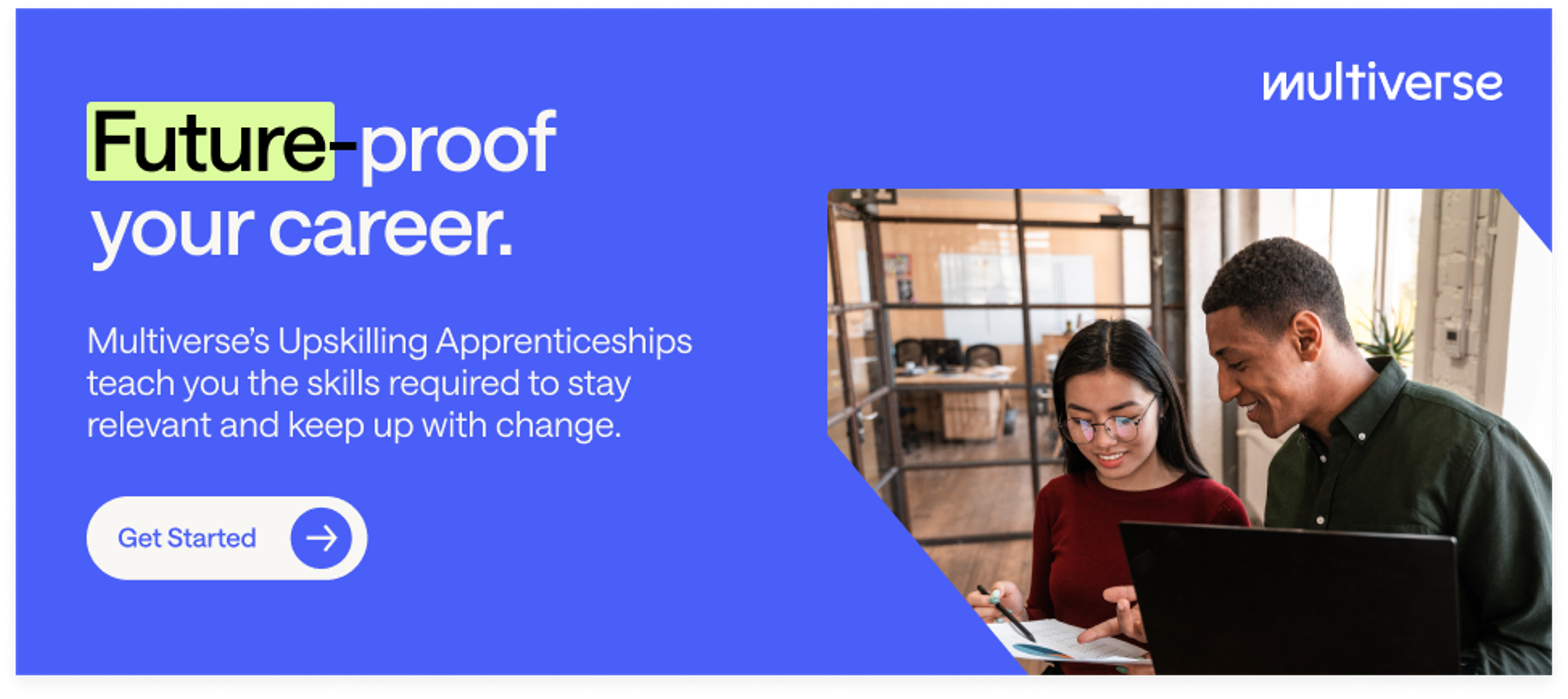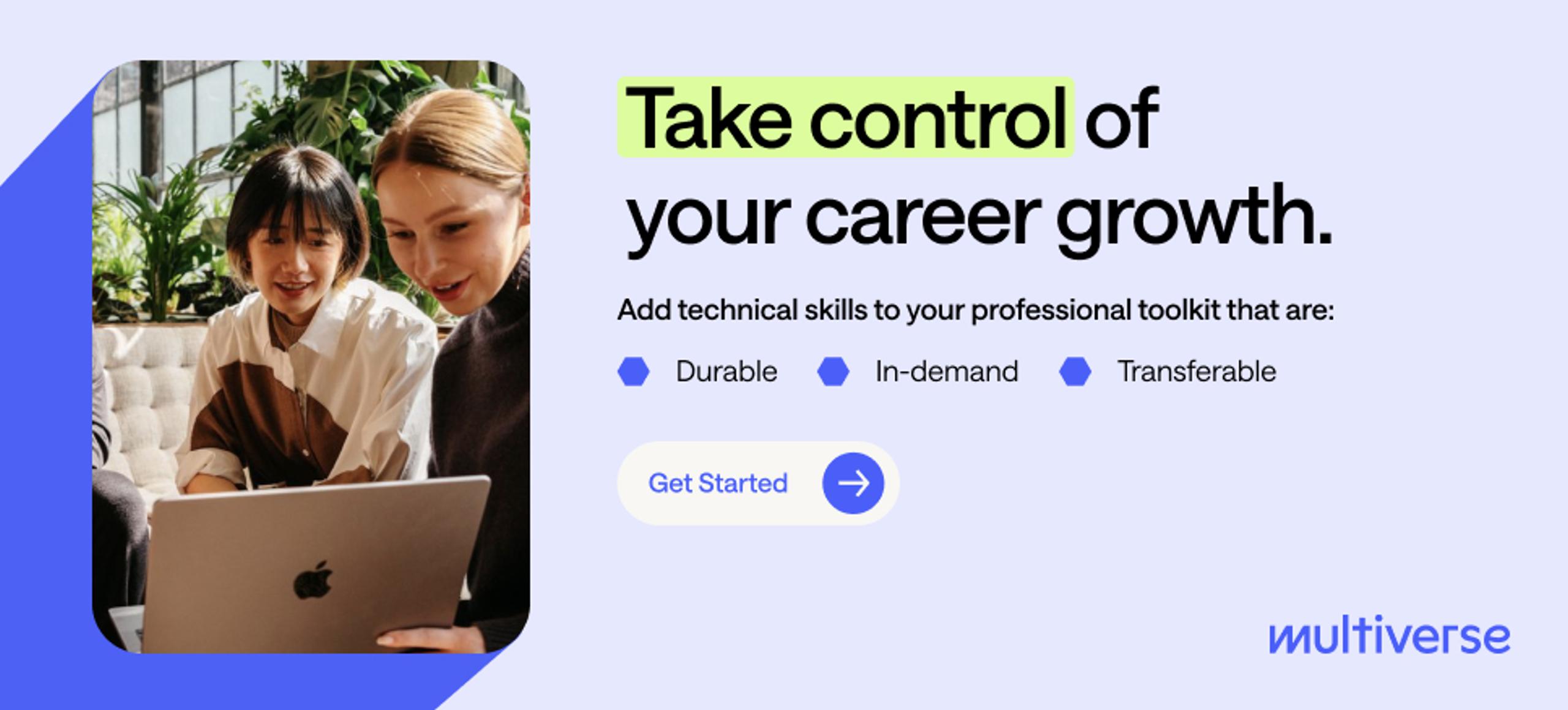A career path plan outlines your professional goals for the short, medium, and long term. It also lists the steps you’ll take to accomplish them. You can use this tool to map out your ideal career path and make it a reality.
This step-by-step guide covers everything you need to know about creating an effective career path plan. Follow our steps and top tips to set yourself up for professional success.
What is a career path plan?
A career path plan is a roadmap for your professional development. It describes your major career aspirations and breaks them down into short-term goals and milestones. You can also use this framework to identify skill gaps and create a strategy to fill them.
A career development plan is a living document that evolves as your circumstances, goals, and interests change. For example, you might originally aspire to become a Senior Product Manager. But this plan could change if you develop a new passion for artificial intelligence (AI) or ethical hacking.
The career planning process offers many benefits. This strategic approach empowers you to navigate your career proactively instead of going with the flow. Taking control will help you avoid getting stuck in your current role or passively following your employer’s goals.
A career plan also allows you to align your goals with actionable steps. Lofty goals can sometimes feel unreachable, especially if you’re at the beginning of your career or transitioning to a new industry. Breaking these ambitions into smaller milestones will help you stay motivated and track your progress.
How to craft a career path plan: a strategic approach
It’s never too early or too late to create a career plan. No matter where you’re at in your professional journey, these steps will help you develop a structured roadmap.
Assess your skills
In many ways, charting your career is like planning a road trip. You need to identify your starting point to map out the most effective route to your destination. Otherwise, you might wander off course or waste time relearning skills.
To get started, you should develop a clear understanding of your current location by conducting a skills assessment. List the interpersonal and technical skills you’ve developed in your current and previous positions. You can also include abilities you’ve gained through education, volunteer work, and personal projects.
As you compile your list, rate your abilities as “basic,” “proficient,” and “advanced.” This step will help you identify your strengths and areas to improve.
Here’s an example of a skills assessment for an entry-level Data Analyst:
- SQL: Advanced
- Python: Advanced
- Written communication: Proficient
- Data cleansing and processing: Proficient
- Data visualisation: Proficient
- R: Basic
- Public speaking: Basic
Update this self-assessment regularly as you expand and hone your skill set. You can use this list to quickly write resumes and cover letters when applying for new jobs.
Explore potential career paths
New career opportunities constantly emerge as industries and technologies evolve. Career exploration allows you to investigate new paths that may fit your goals and interests.
Start by following the latest trends in your industry. You can stay updated by joining professional associations, subscribing to newsletters, and participating in online communities. These steps will keep you informed about emerging careers and cutting-edge technologies.
Suppose you’re a Junior Software Developer. You notice that your online tech communities are buzzing about a new framework called edge computing. You could become an early adopter of this technology and use your skills to become an Edge Solutions Architect.
Informational interviews also allow you to explore your career options. Network with people who have interesting jobs and ask if they’d be willing to share career information and insights. This process gives you an inside look at various jobs and may help you discover new paths you’ve never considered.
Look for case studies and models
Observing role models can motivate you and provide you with a blueprint for success. Look for professionals who have already achieved your ultimate career goals. You can use many strategies to find these case studies, such as:
- Identify people you admire in your company
- Search LinkedIn for professionals with your dream job title
- Follow industry influencers and thought leaders on social media
- Participate in mentorship programs
- Read or listen to biographies, interviews, and podcasts about industry rock stars
Study these role models to learn about their career progression, skills, and accomplishments. For example, you can visit their professional websites to view their CVs and portfolios. You can also look at their previous job titles and employers on LinkedIn.
This process will help you understand your role models’ professional journeys and identify essential skills. You can use this information to shape your career plan and imitate their success.
For instance, you may discover that many Lead UX Designers have a Google UX design certification. Earning this certification would help prepare you for this advanced role.
Set SMART goals
Once you have a sense of your broad ambitions, it's time to set your career goals. The SMART framework(opens new window) is one of the most effective ways to establish short- and long-term objectives.
Let’s break down this acronym and its meaning:
- Specific - Use action words to describe what you plan to achieve.
- Measurable - You can quantify or observe your progress.
- Achievable - You realistically expect to accomplish your goal given your current abilities and resources.
- Relevant - The goal fits your overall career plan.
- Time-bound - The goal has milestones and a target deadline.
Let's say you're an IT Support Specialist who wants to reskill and become a UX Designer. Here are a few examples of SMART objectives you could establish to help you achieve this overall goal:
- Complete two online courses on fundamental UX design principles in the next three months.
- Spend 30 minutes daily reading about UX design best practices and trends.
- Develop wireframes for a chess game mobile app, e-commerce website, and other applications by the end of the year.
- Create a prototype for a to-do list mobile app in December.
- Design a digital portfolio to showcase your UX design skills in the next 12 months.
Creating SMART goals allows you to identify tangible action items and keep yourself accountable. They also help you plan your schedule and focus on your long term goals.
Prioritise skills and interests
You can’t learn everything at once, especially if you have other responsibilities. Decide which skills and interests you want to prioritise in your career plan.
Start by analysing job advertisements to identify must-have competencies. Read several dozen job descriptions for the types of roles you plan to pursue. Note the required certifications, skills, and tools for each position. Focus on gaining qualifications that appear in multiple postings to increase your competitiveness for these roles.
Researching job market trends can also help you prioritise skills. Follow industry news to learn about in-demand technologies and tools. Gaining relevant knowledge and skills will allow you to position yourself as an innovator and stay competitive.
Identify concrete steps and take action
Use your SMART goals to create an action plan. Break each goal down into several steps you can accomplish in a few weeks or months.
Let’s say you want to learn Swift in the next six months to create iOS applications. This goal may seem daunting, but you can divide it into these concrete steps:
- Get concrete professional experience via an internship or apprenticeship programme
- Use the Swift Playgrounds app to practise your coding skills daily.
- Complete an online course to learn how to build a social media app with Swift.
- Visit the r/iOSProgramming subreddit daily to learn about the experiences and challenges of Swift Developers.
Finally, use these goals to craft your action plan. Set aside at least 30 minutes daily to work on one or more goals. You should also assess your progress regularly and adjust your schedule as necessary. This structured approach will allow you to make consistent progress and avoid burning out.
Tips for setting concrete career goals
Establishing clear goals is one of the most difficult parts of career path mapping. These additional tips will help you develop and achieve your goals:
- Conduct an honest self-assessment to identify your interests, skills, and values.
- Don’t be afraid to research career paths that catch your interest, even if they seem unrelated to your current role. Many people successfully transition to new careers.
- Schedule a performance development planning session with your manager or mentor. They can give advice about your career plans and suggest developmental opportunities.
- Prioritise your career goals based on your personal and professional aspirations, not your company’s objectives.
- Regularly review and adjust your goals as your circumstances change and market conditions evolve.
- Celebrate your milestones to stay motivated.
How can you accelerate your career path?
There’s no shortcut or magical formula for professional development. Successful career planning requires consistent effort and time. But these strategies can help you advance your career growth faster.
Upskill
Upskilling is the process of learning new skills or levelling up existing ones. This approach helps you expand your knowledge and stay competitive in the changing job market.
A Multiverse programme is one of the most effective ways to upskill. Learners can pick from programmes in data analytics, AI, and other in-demand fields. They develop theoretical knowledge and gain hands-on experience working for leading companies.
Other upskilling strategies include:
- Earn advanced certifications
- Learn cutting-edge technologies
- Volunteer for more challenging responsibilities or leadership roles at your current company
- Offer your services as a freelancer or consultant
- Contribute to open-source projects to expand your technical abilities
Grow your professional network
Networking enables you to explore new career options and find mentors. It also helps you learn about open positions that may not be advertised on popular job boards.
Grow your network by becoming an active member of professional organisations in your industry. These associations often organise conferences, webinars, social gatherings, and mentorship programs. These initiatives allow you to meet people from different career stages and enrich your industry knowledge.
One example of such a group is the Multiverse Community for alumni apprentices. This group offers access to networking events, exclusive content, and career development and mentoring opportunities.
The Internet is another powerful networking tool. You can connect with professionals on LinkedIn, Instagram, and other social media platforms. Engage with their content and share resources and insights. Over time, you’ll build your reputation and strengthen your relationships.
Build a personal brand
Personal branding is the deliberate development of your public identity. Professionals often build a personal brand to establish themselves as industry leaders and increase their visibility.
These strategies will help you cultivate your personal brand:
- Create a professional website highlighting your unique abilities, achievements, and values.
- Use images, language, and logos that reflect your personality.
- Demonstrate your expertise by developing and sharing meaningful content. For example, you can write blog posts or produce videos about industry trends.
- Share personal anecdotes and lessons you’ve learned to engage your audience.
Apply learnings to take on additional strategies
Career planning is an ongoing process of exploration, learning, and reflection. Use the insights you gain to refine your career goals and action plan continually.
For example, upskilling could allow you to pursue different positions at your company. As you transition into new roles, you’ll gain additional competencies and collaborate with different colleagues. These experiences could motivate you to launch a business and pursue new goals.
Grow your career with today’s in-demand skills
It can be hard to know what direction your career path will take you. That’s why making a dedicated career plan is essential for all employees.
This framework allows you to clarify your career aspirations and set meaningful goals. It can also help you identify new opportunities for growth. For instance, you could explore new career paths related to your talents and personal interests.
Career planning can also help you prevent burnout. You’ll feel excited and motivated as you complete smaller tasks on your action plan and count the milestones you’ve reached. This process also promotes work-life balance by allowing you to map out a reasonable timeline for improvement.
Applying for an upskilling programme can accelerate your career development and help you expand your professional network. Complete Multiverse’s simple application(opens new window) and our team will get in touch to help you find opportunities that align with your goals.







